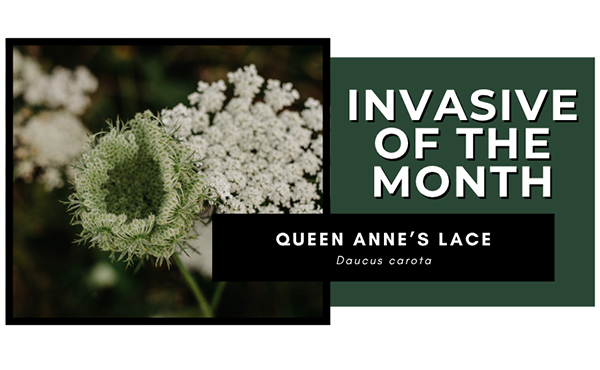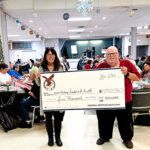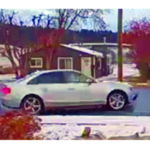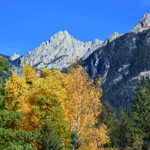Home »

Invasive of the Month
By East Kootenay Invasive Species Council
Queen Annes’ lace (Wild carrot) is common to roadsides and other disturbed areas. It was introduced from Europe as a medicinal herb. This biennial plant persists in clay soils and can be a threat to recovering grasslands. After going to seed the dried flower takes on a “birds’ nest” like appearance and can move like a tumble weed to help spread its seeds.
Queen Anne’s lace grows up to one m in height with hairy stems, and deep penetrating taproots and carrot-like smell.
Its flowers are in an umbrella-shaped cluster and white, usually blooming from May to October.
Leaves are finely dissected, fern-like and hairy.
Impacts:
 Health: Contact with the plant’s sap can cause skin irritation when exposed to sunlight, and ingestion in large quantities can be toxic.
Health: Contact with the plant’s sap can cause skin irritation when exposed to sunlight, and ingestion in large quantities can be toxic.
Ecological: It can reduce biodiversity by outcompeting native plant species.
Economic: Consumption by livestock may taint milk, and the plant can affect commercial carrot production by increasing hybridization or spreading diseases and pests.
Management and Prevention:
 Mechanical: Hand pulling small infestations can be effective if completed prior to seed. Repeated mowing or tilling can reduce seed production if completed prior to flowering.
Mechanical: Hand pulling small infestations can be effective if completed prior to seed. Repeated mowing or tilling can reduce seed production if completed prior to flowering.
Chemical: Several herbicides with the following active ingredients can control Queen Anne’s lace: 2,4-D, aminopyralid, metsulfuron, dicamba, picloram, triclopyr, chlorsulfuron, and imazapyr. For available products, contact your local agri-supply store. Prior to any herbicide application, read and follow the label instructions.
 East Kootenay Invasive Species Council photos
East Kootenay Invasive Species Council photos
The East Kootenay Invasive Species Council works to minimize the threat of invasive species that impact the environment, the economy and human health in the East Kootenay region of B.C., and we couldn’t do it without you! as a non-profit, we rely on grant funding and the generous support of our community to operate. Your donation will help us continue to protect the East Kootenay from invasive species. Donate here.








